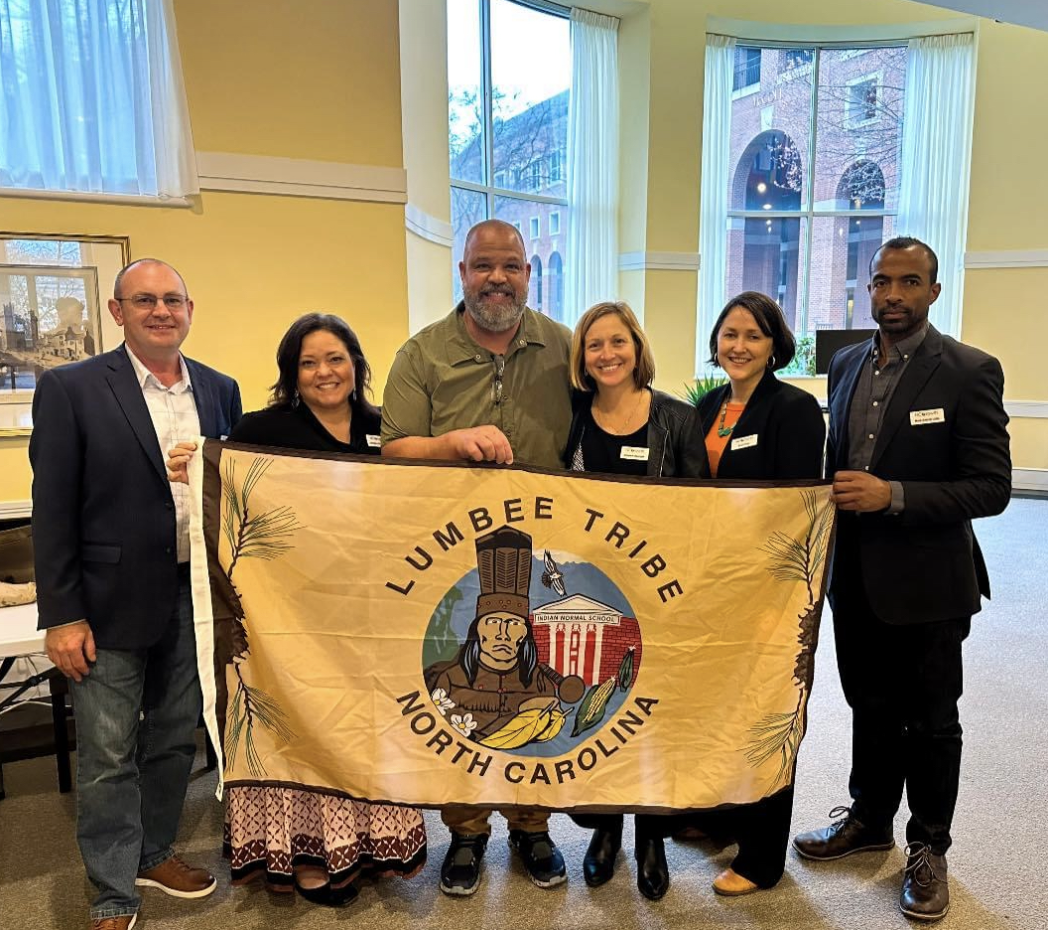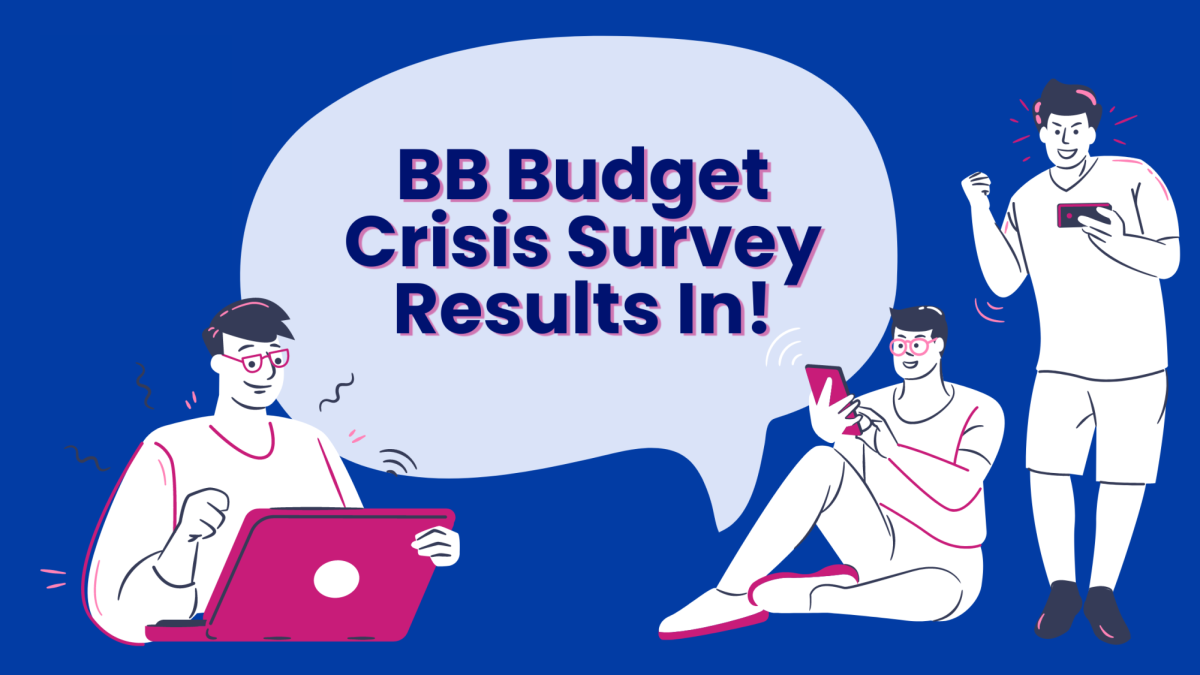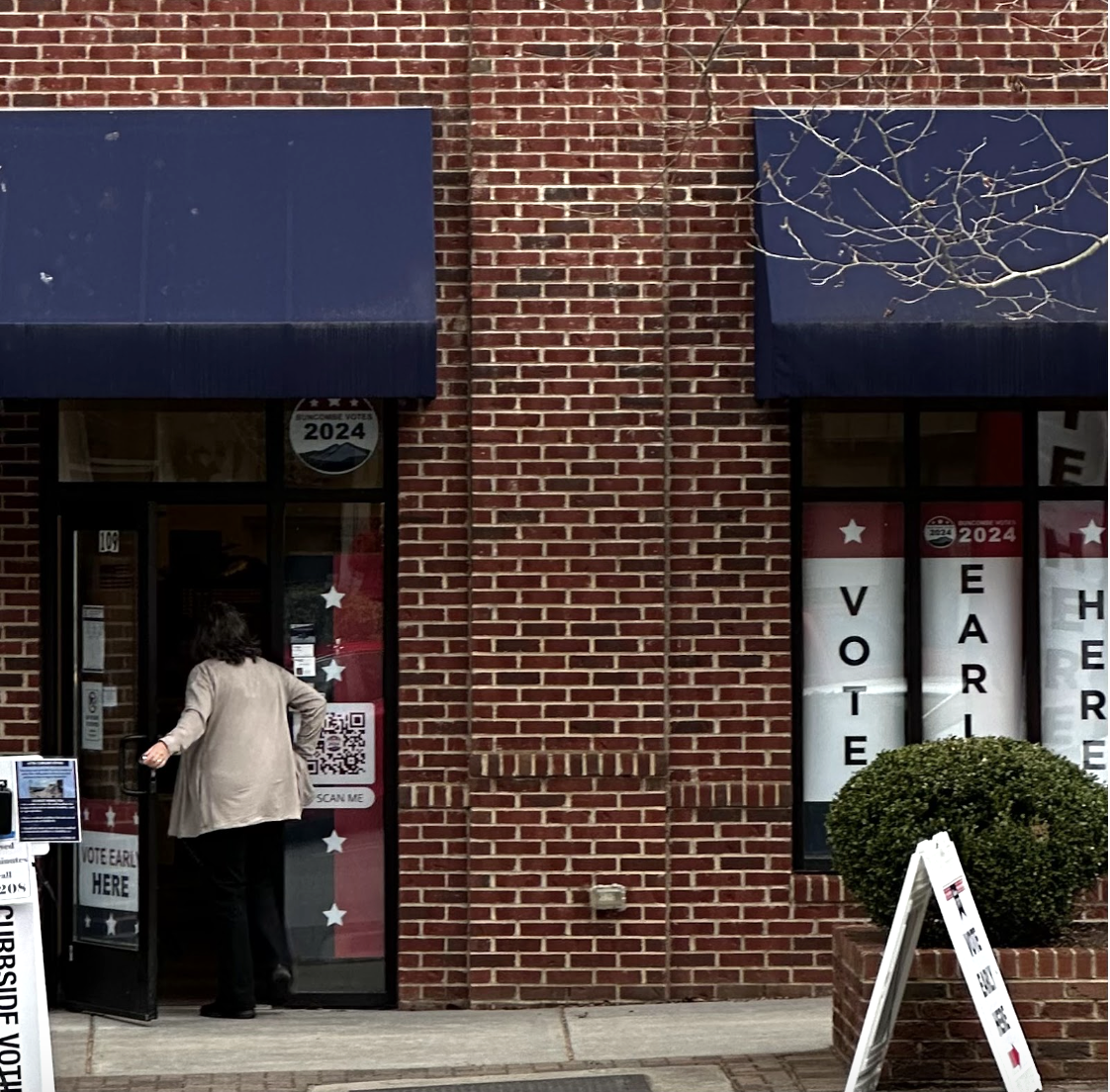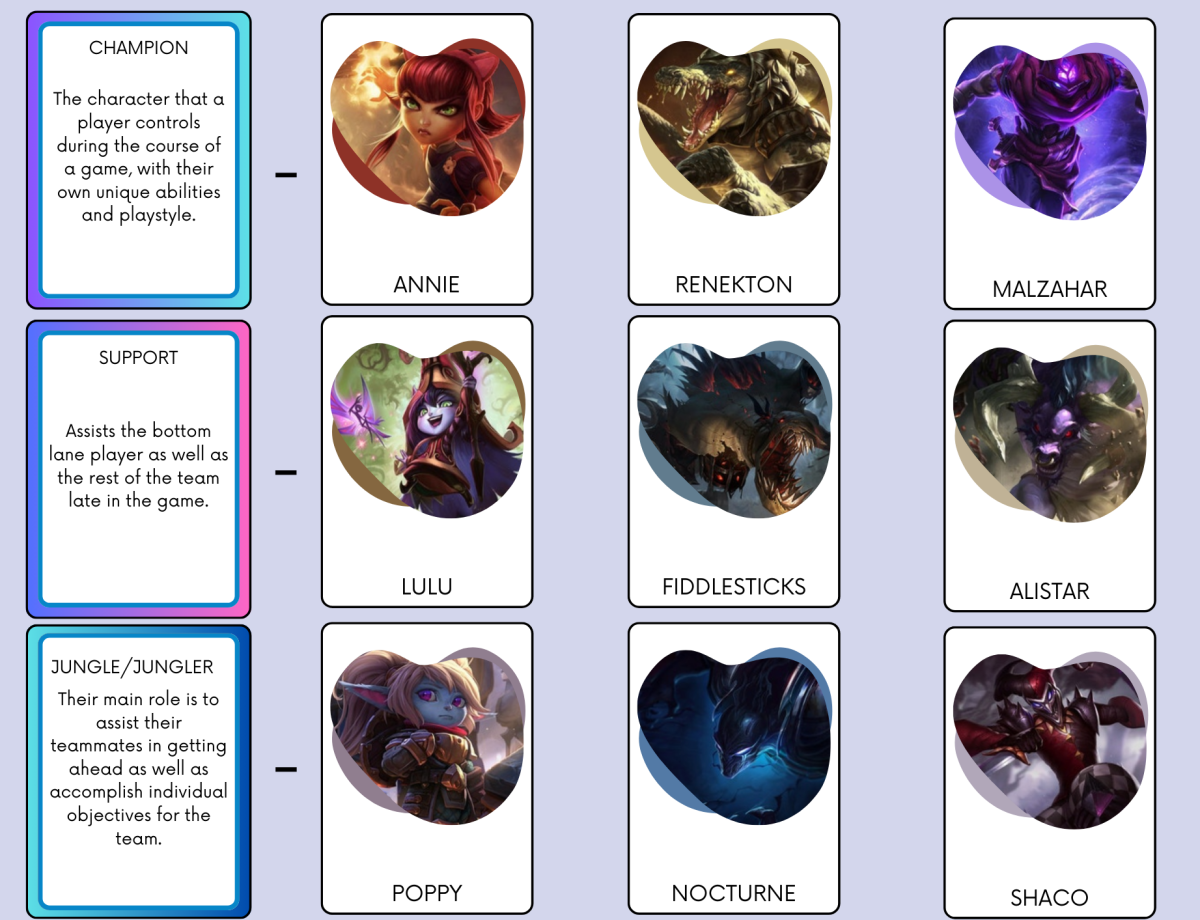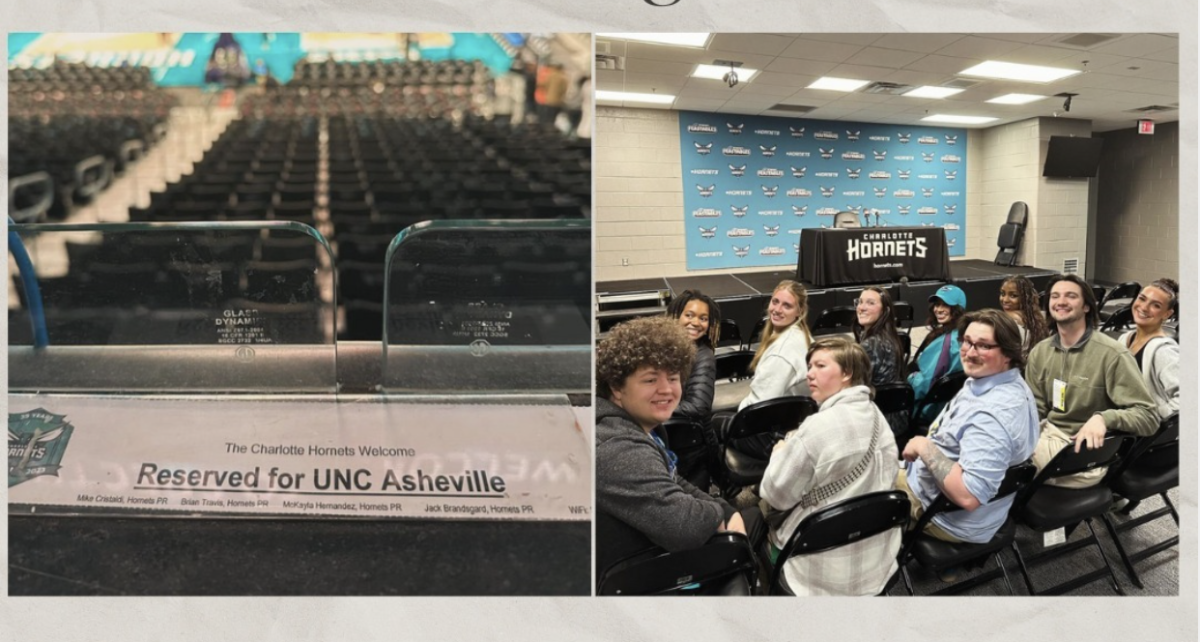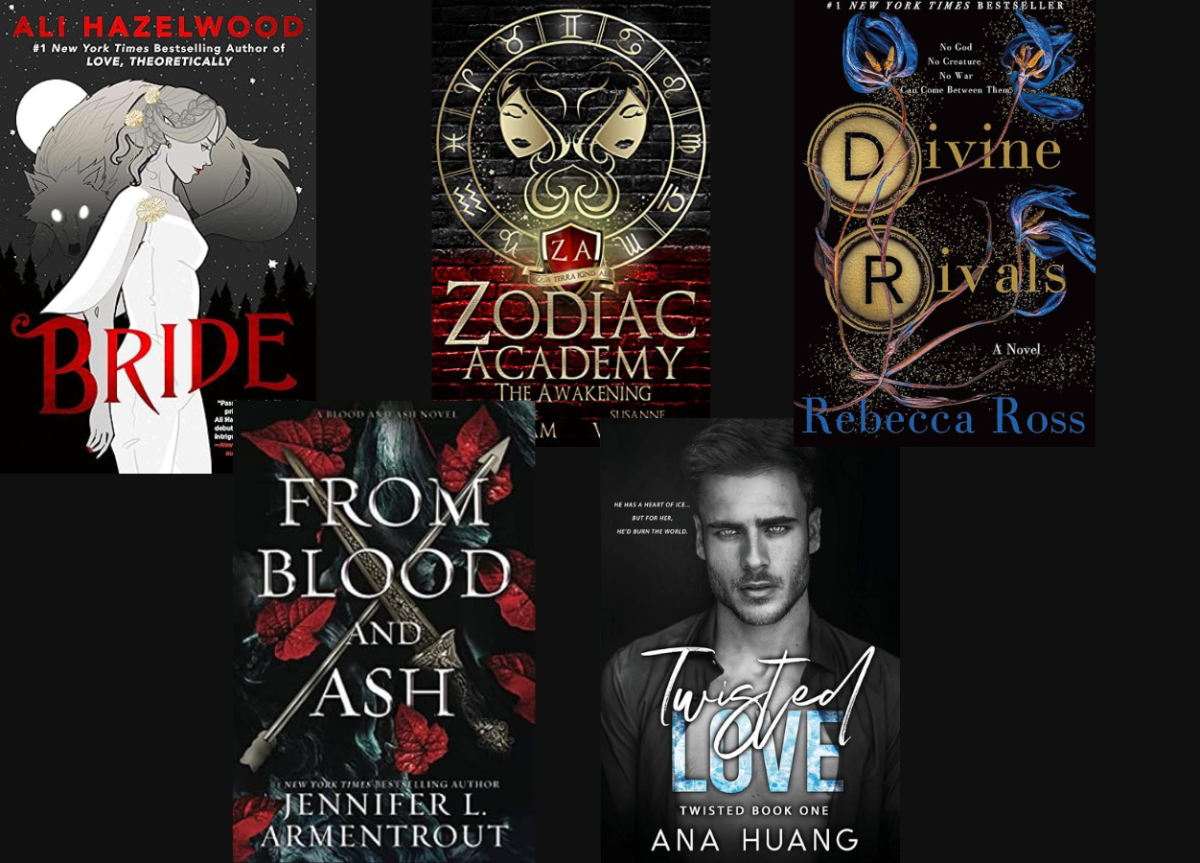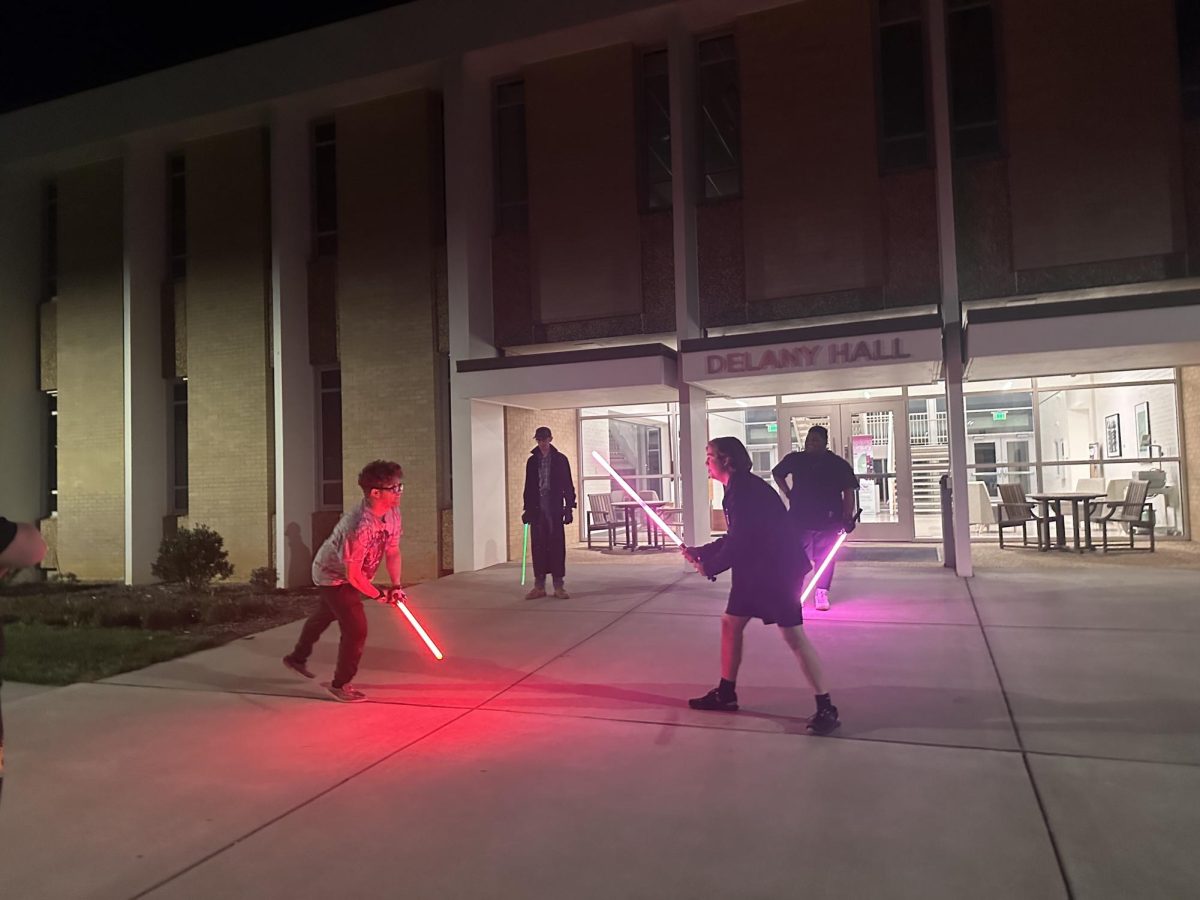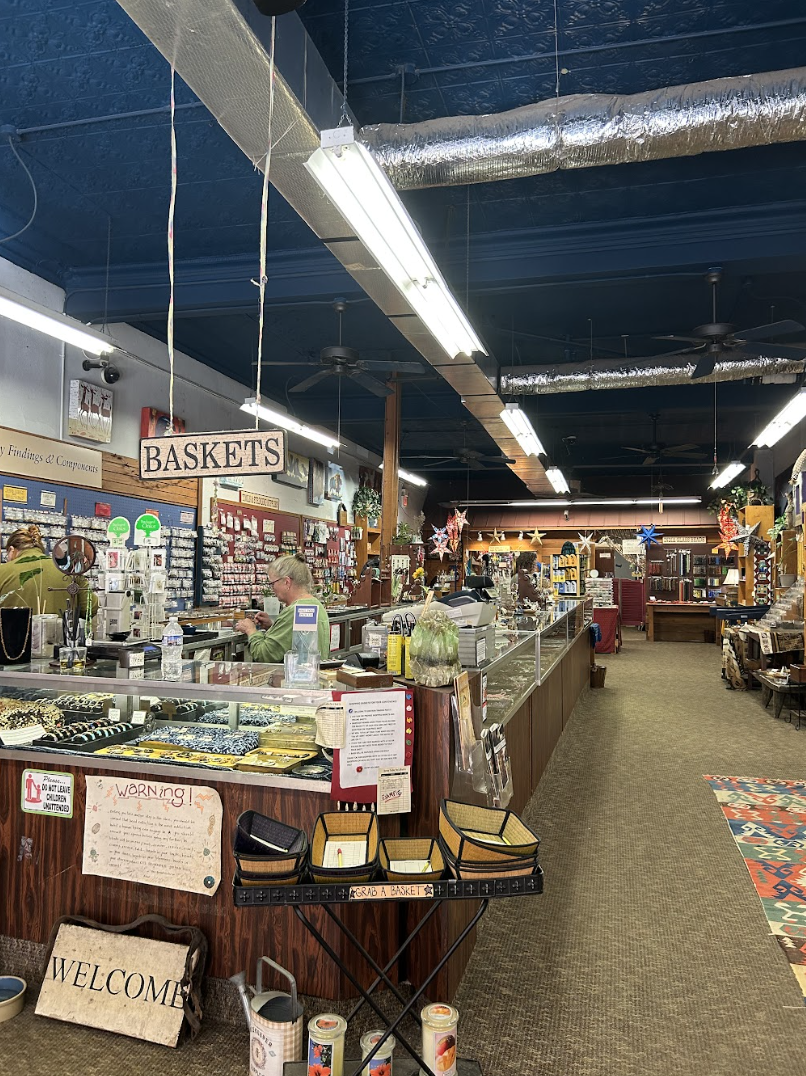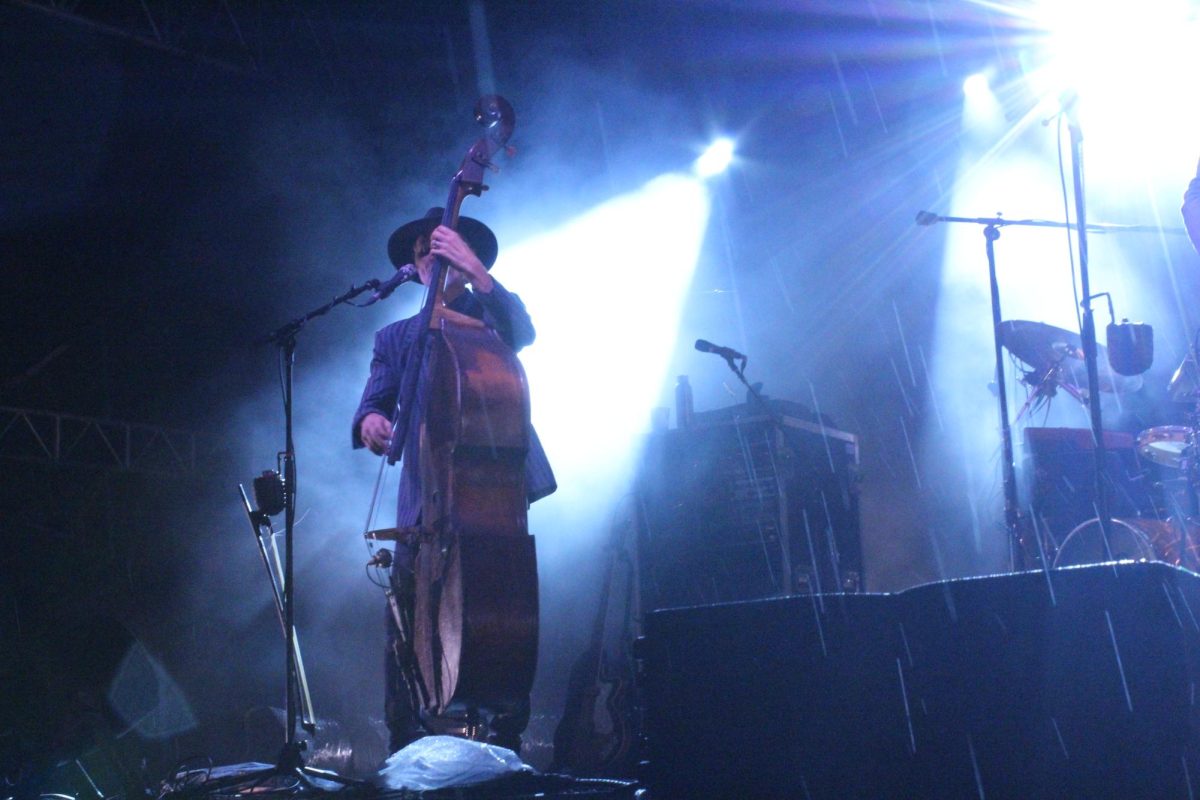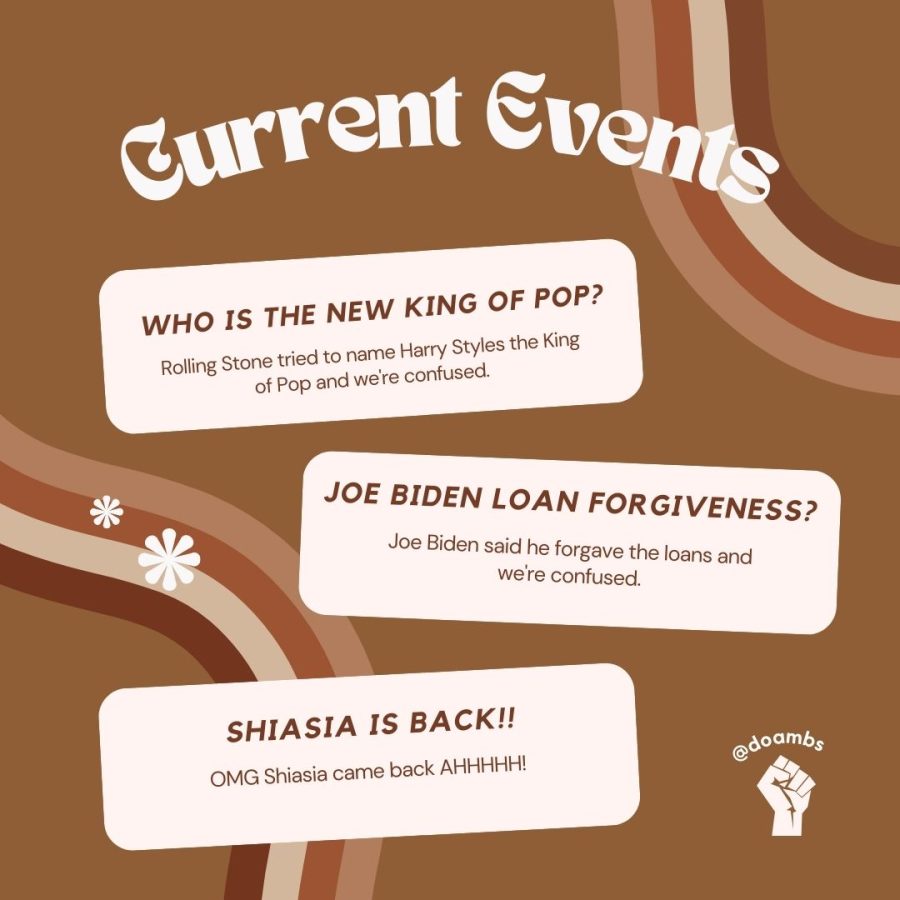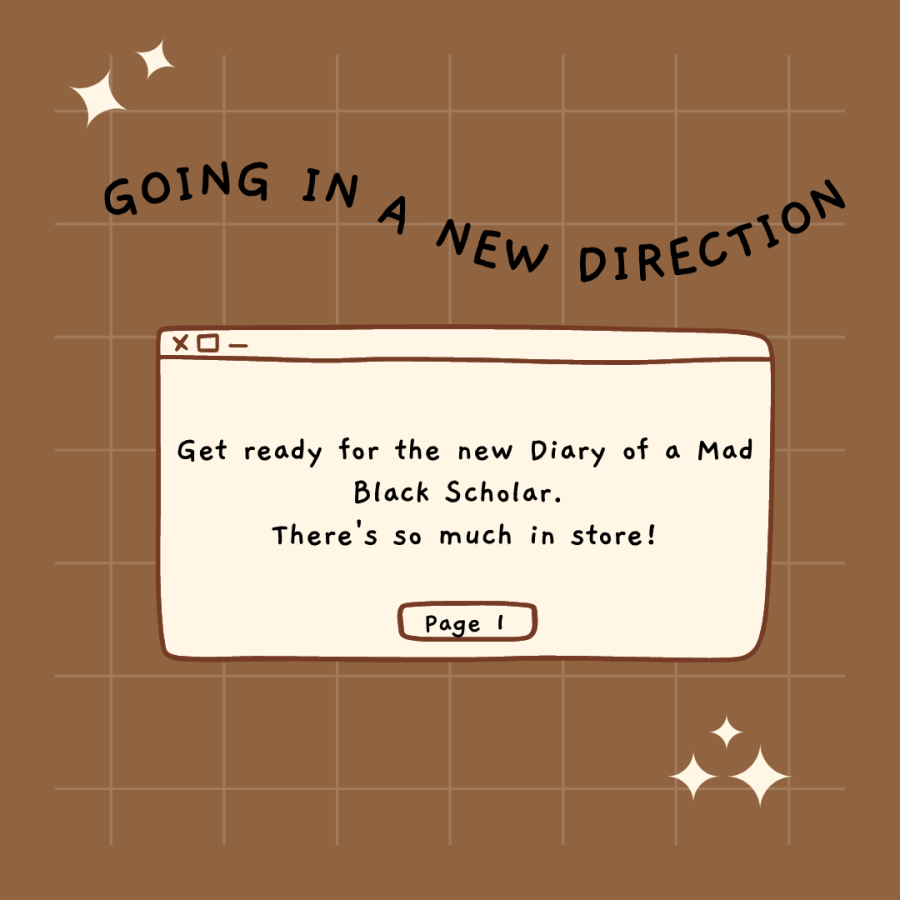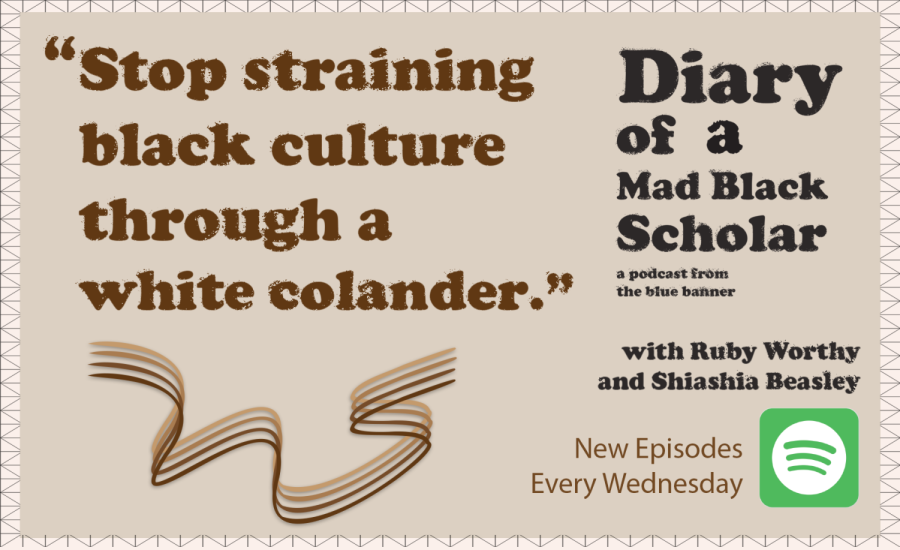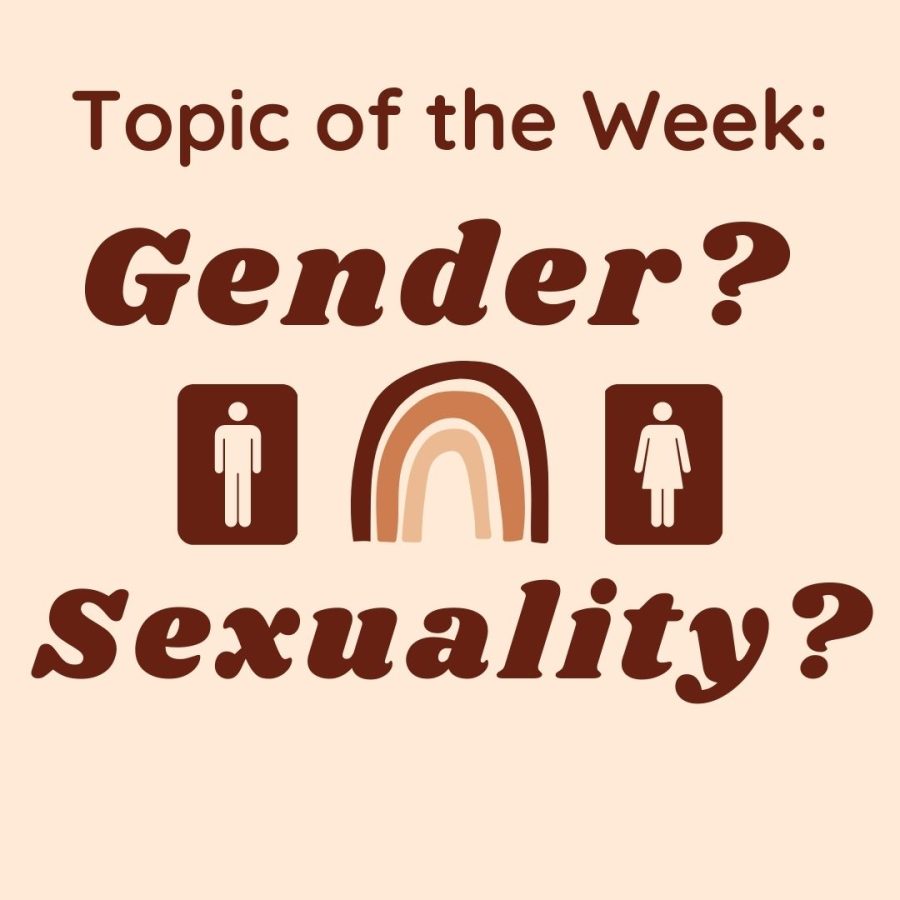Samuel Robinson
Sports Staff Writer
[email protected]
Spotify and like-minded music streaming services were founded to compensate artists amid the height of illegal downloading.
The services draw criticism from many artists, particularly those who experienced mainstream success before the rise of music streaming services. Thom Yorke of Radiohead called Spotify “the last desperate fart of a dying corpse,” yet still releases music on the platform.
While the music industry remains divided on the new streaming services, local musicians seem to favor the blossoming platform.
“I like streaming services and the accessibility of them and I like the music community it promotes. It’s a great resource to learn about other artists,” said Gabby Feinstein, a senior psychology student at UNC Asheville and member of the local band Mama Danger.
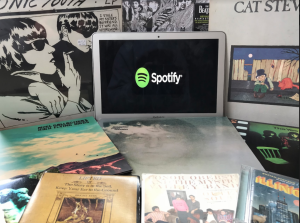
become obsolete at the hands of streaming services like Spotify. Photo by Samuel Robinson.
Feinstein said Spotify and other streaming services may somewhat compromise the art of the album as listeners once knew it, but believes the benefits outweigh the risk.
“There is definitely an aspect of commercialization on there. But there are so many genres and communities, it serves as a great platform for budding artists,” Feinstein said. “I use Spotify. My band isn’t on any streaming services yet, but we will be soon.”
Spotify is a Swedish company which launched nearly 12 years ago as a way to combat fans illegally pirating music from the Internet. It has 72 million paying customers and is by far the world’s largest music streaming service.
“Spotify was founded on the belief that music is universal and that streaming is a more robust and seamless access model that benefits both artists and music fans,” the company stated on Feb. 28 when it filed to go public.
While new age streaming services such as Spotify and Apple Music draw heavy criticism from established artists, there seems to be a general acceptance amongst artists trying to break into the music industry.
“The way people listen to music is changing,” said Miles Boone, a junior music student. “There’s a lot of full-length albums that aren’t released on CD anymore, it is completely digital. So a lot of times that’s their only platform to release music is to do it through Apple Music or Spotify.”
The way Spotify and other streaming services compensate their artists is still a mystery to many. The company pays artists $0.00397 per stream, according to reports by the Trichodist in 2017.
“I think it’s okay and you still get paid. I don’t really know how that works, but it’s not like you’re just listening to music for free. I pay for Apple Music so I like to think that I’m contributing as best I can,” Boone said.
Katie Edwards, a junior music student, said she has used Spotify for five years while still buying physical copies of albums that she really loves. It could be detrimental to the music industry if listeners forgo purchasing physical copies altogether and solely stream their favorite artists’ work, Edwards said.
“Artists should get credit for the work they’re putting out. Spotify doesn’t always give that credit,” Edwards said.
What is odd about this general acceptance from budding artists is that their payout is the lowest from these streaming services. Spotify pays royalties based on an artist’s number of streams. Ed Sheeran was streamed 6.3 billion times on Spotify last year. Spotify pay artists about $7 per 1,000 streams, so while Ed Sheeran may have earned $44 million from the company last year, bands with only 10,000 streams could expect roughly $70 for their efforts. A ‘90s or early 2000s band, preceding Spotify and Apple Music, could sell 1,000 albums and likely see a higher pay compensation even after the band’s record company took their share.
“I’d like to think people who are passionate about music will support the artists by buying a hard copy or downloading it on iTunes,” Edwards said.
Despite marking the initial shift away from physically purchasing music, the iTunes Store provides artists with a much more acceptable pay compensation. Artists generally receive between six and seven dollars per album sold on iTunes, or between 60 and 70 cents per song sold. That may be an even greater payout than artists would receive selling physical copies of their albums, assuming the record companies take around 50 percent.
“When I’m really excited about something being released, I like to get a physical copy, whether it’s an LP or an actual CD if one exists,” Boone said.
Similarly, Edwards said she appreciates a streaming service’s ability to allow artists to express themselves and their opinions on a widespread scale, but would like to see more consumers go the extra step to support the artists they stream the most.
“Because I’m so passionate about music, I want to support artists, so I’ll go that extra step and buy the music,” Edwards said.
Unfortunately, many listeners do not operate the way Boone and Edwards do. Instead of using streaming services to test the waters of new albums before purchasing them, consumers view streaming services as a route to save money and never have to buy an album again. Artists have to find new sources of income to combat the absence of album sales.
“I think the reality for most artists is they’re not going to be making their money off of their streams anymore,” said Molly Jaben, an employee at Occupation Records and personal assistant for Claude Coleman Jr., drummer of the band Ween. “They’re going to make their money off of ticket sales and merchandise.”
According to an ABC News article published in July, concerts are now artists most lucrative source of income. Whereas bands once toured to promote upcoming albums in order to increase sales, artists now tour in an attempt to recoup what is now lost in album sales.
“I think it makes life more difficult, but that’s the game. They’re going to tour and travel anyway, you might just have to do it a little more and if that’s what it takes, so be it,” Boone said. “If I had to tour a little more, I would do it. At the end of the day you don’t tour for the cash, you tour because that’s what you want to do, that’s your passion, to make music and perform.”
According to a recent Rolling Stone article with Def Leppard, many artists who once held out on streaming services are accepting the shift in music consumption and allowing their music to be streamed on Spotify, Apple Music and other similar services.
“I think there was a little bit of resistance to it when it was first coming out and we were switching over from albums to online services. I think people really rejected it because it signified the change in tides of the music industry,” said Jaben, a UNCA graduate.
Another concern for some musicians and listeners alike was what this shift would mean for the art itself. Not long ago, consumers would rush to the store to purchase their physical copy of an album and enjoy the art and lyrics that often accompanied the tangible product.
“I don’t think it compromises the art, I think what compromises the art is it being less artistic. I think if you can put your art into a digital album the same way you could an LP or a CD, I think you’ve done your job,” Boone said.
